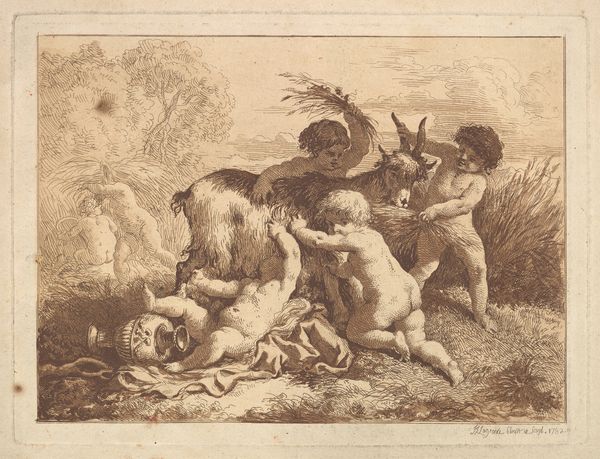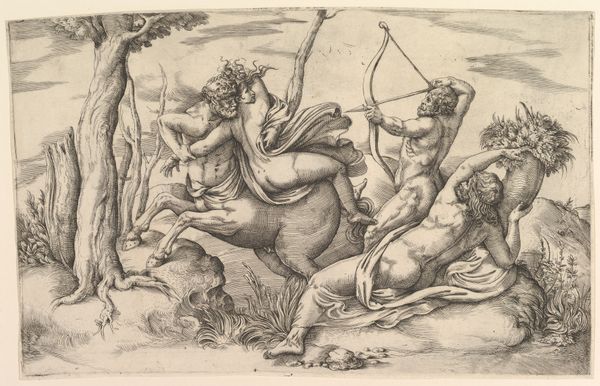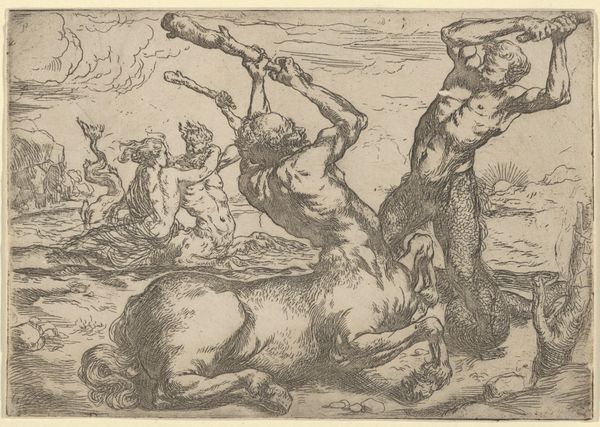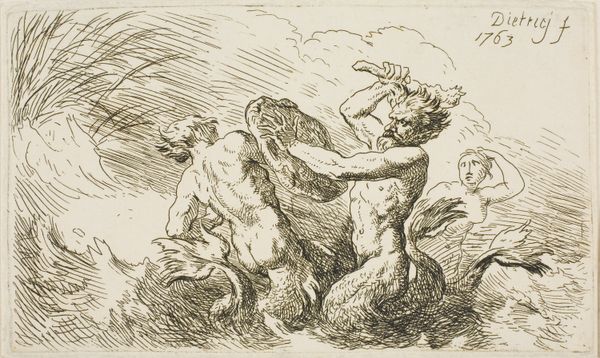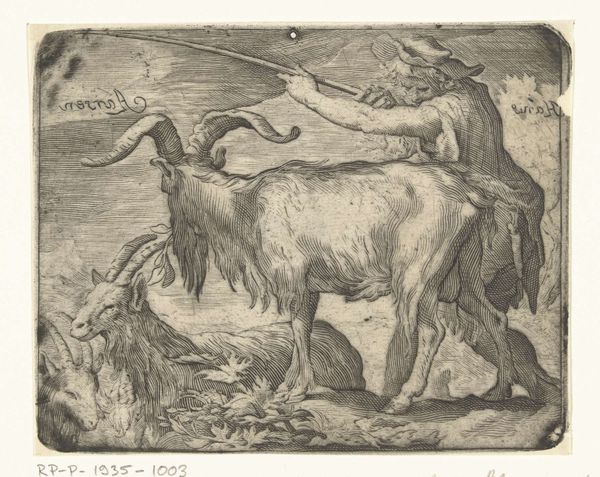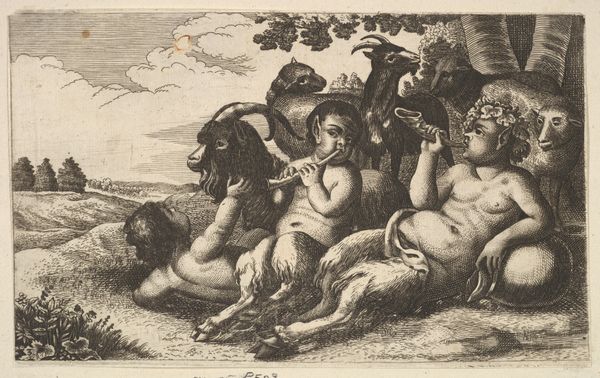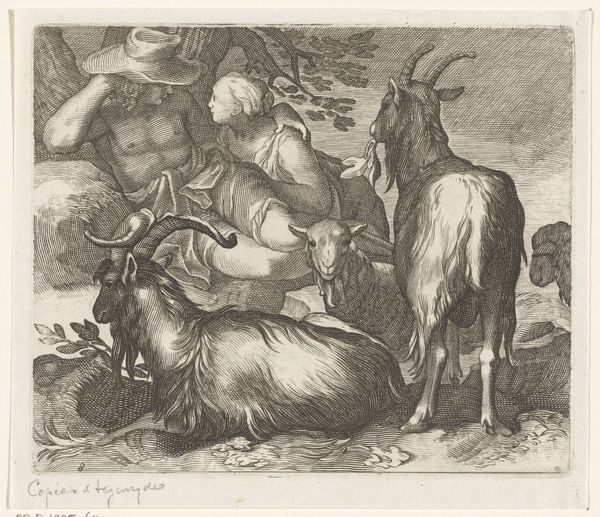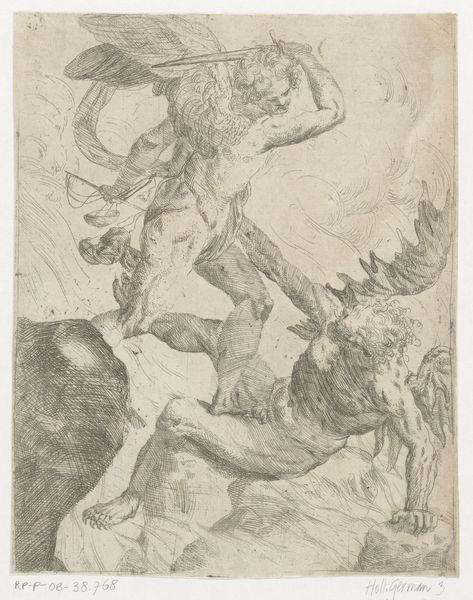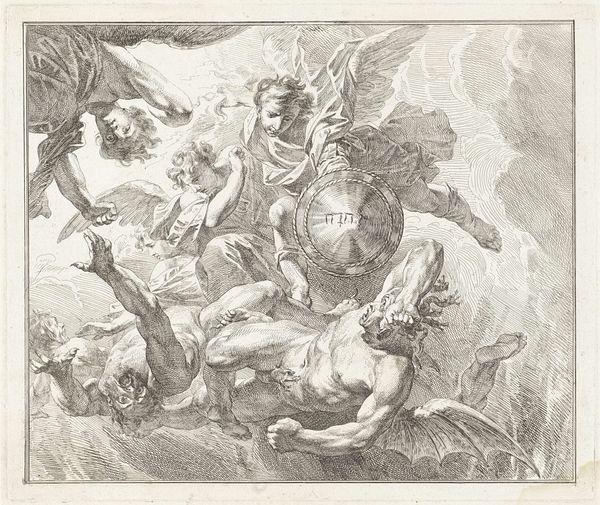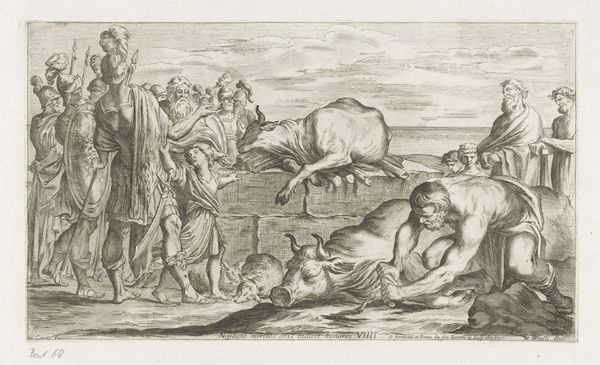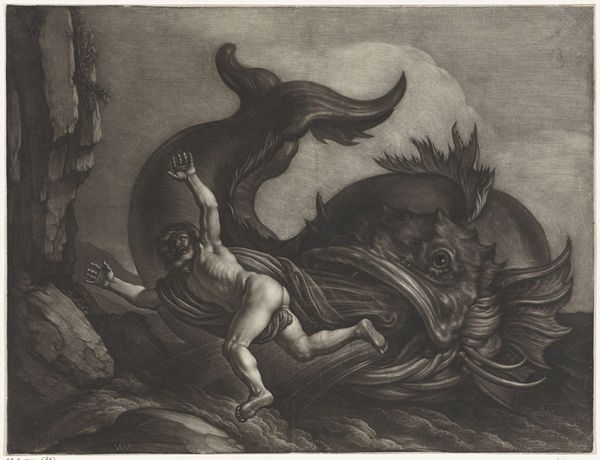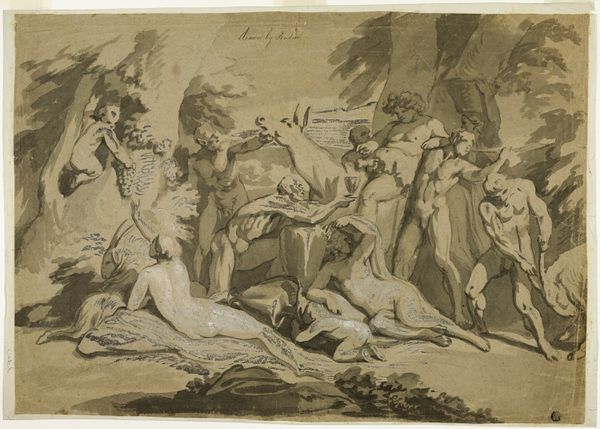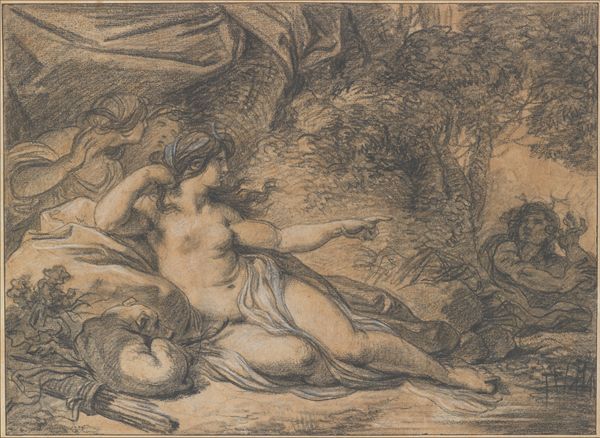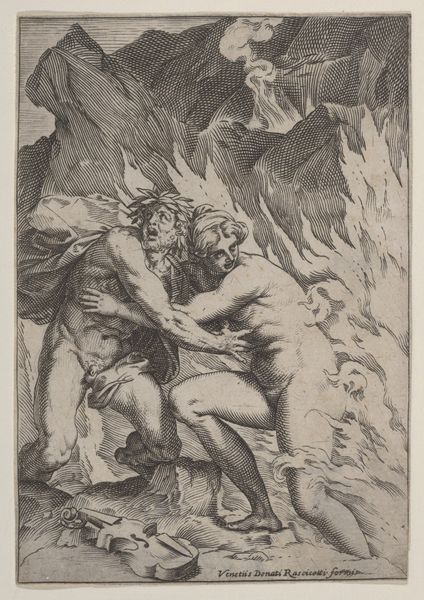
Dimensions: 37 cm (height) x 45.5 cm (width) (Netto), 45.6 cm (height) x 53.9 cm (width) x 4.3 cm (depth) (Brutto)
Curator: So, we are looking at Nicolai Abildgaard's oil on canvas, “Ymir Suckling the Cow Audhumla,” created sometime between 1775 and 1778. It’s part of the collection here at the SMK. And what strikes you immediately about this scene? Editor: Utter dependence. I mean, look at those figures huddled around, almost desperately reaching for the bovine… sustenance? It’s a surprisingly intimate depiction of… well, early sustenance. It makes me think about first moments and vulnerability. Curator: That dependence is key. Abildgaard is drawing from Norse mythology here, illustrating the very genesis of life. Ymir, the primordial giant, is quite literally being sustained by Audhumla, the cosmic cow. Her milk nourishes him, but she herself creates the first god through licking a salty block of ice. Think about that circularity! Editor: Okay, cosmic cow – love it! But I’m stuck on Ymir. He's…not idealized. His pose is awkward, his expression seems almost vacant. There’s nothing heroic about him. Was this deliberate? Curator: Absolutely! This wasn’t about celebrating heroism but probing at the raw, unformed state of existence. Abildgaard, influenced by Romanticism, was often exploring those messy, in-between spaces. Consider, too, the palette—muted earth tones contrasting with these washes of rainbow light streaking through the sky. It suggests chaos but also promise. Editor: The gender politics are so blatant. The feminine here is portrayed as a maternal life-giver. Is it reverence or a constraint? It reduces this powerful being to its function in procreation. And what about those figures in the background? Are they doomed to suckle in desperation? Curator: Yes! You get it! Early interpretations certainly emphasized Audhumla's role as benevolent provider, but looking through a contemporary lens allows us to unpack those inherent power dynamics, these issues of autonomy and, perhaps, enforced servitude. This work acts as a prompt. How do these roles intersect with our understandings of the sacred and the profane? Editor: So, Abildgaard, by depicting this mythic moment, isn't just telling a story, but posing uncomfortable questions about our own social fabric. Curator: Exactly! That’s why I think it's essential to bring these ancient narratives into dialogue with modern, even intersectional, thought. Art keeps speaking. Editor: It sure does! And I'll be chewing on this for a while – thanks for this insight.
Comments
No comments
Be the first to comment and join the conversation on the ultimate creative platform.
